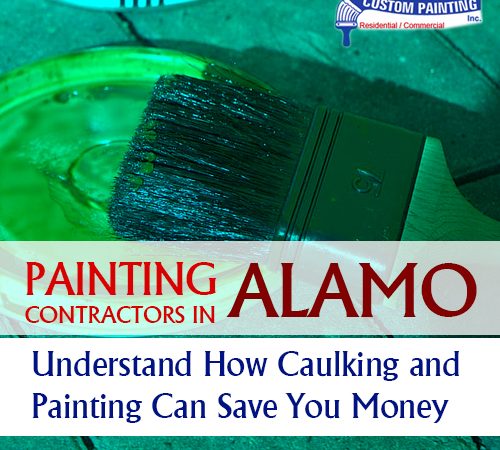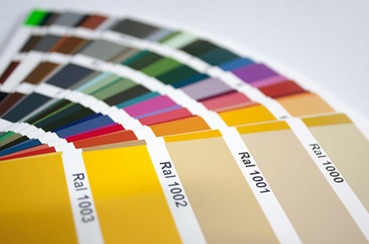
Painting contractors in Alamo will tell you that eliminating gaps in your home’s structure and walls can save you money. Filling in the gaps can reduce wasted energy – resulting in a lower utility bill – and help heat and cool your home more efficiently.
Long-time property owners are aware that cracks, gaps, crevices, and fissures can occur that allow cold or hot air, water, or pests to enter the building, which can weaken and ultimately damage the structure over time. This makes the building unsafe for occupants.
Suppose you have been living or working in a home or building that is several years old. In that case, you must have it regularly inspected by professional painters, carpenters, or builders who can identify these cracks and gaps while they are still small and easy to fix. But if the cracks or crevices are small but many, they could easily equal a hole of two square feet or bigger! The result is the same as if you were leaving a window open all year long. A house that is not sealed correctly can lose incredible energy every day.
Like most other solids, your house or commercial building will expand, and contract as the temperature around and inside it changes. This will cause small gaps to begin and to increase in size. You might feel a draft or notice more dust and dirt. Rain can get in behind the siding or walls, resulting in damage from water or mildew. The wood in the areas can rot, warp, or splinter.
Whether or not you suspect cracks or gaps in your house, you should regularly check for them inside and outside. Areas most likely to have these small fissures include windows, doors, trim, baseboards, and other jointed areas.
How can caulking a building save you money
1) Caulking seals cracks and gaps between surfaces
Caulking is the best way – and the only way – to seal gaps between two surfaces, such as two walls, the wall and the baseboard or trim, the wall, and the floor, etc. Caulking closes the gap between the materials, making them air-tight and water-tight. It prevents outside water and moisture from infiltrating the building, saving you maintenance costs.
2) Caulking prevents water buildup
If the exterior surfaces are adequately caulked, it becomes water-tight. Most of the water that enters the building is the water that runs through the pipes, which will prevent damage to the building due to water infiltration. Water can enter the building if cracks or gaps have formed between surfaces. Humidity can also lead to water infiltration even in the absence of rain. Caulking your building properly can help eliminate water buildup.
3) Caulking saves you energy
The openings in your building’s structure can allow the indoor air to flow out or the outside air to flow in.
During the summer, the warm air will get in through the cracks while the cooler air in your home will escape, leading to a rise in temperature indoors. This is where you’ll find yourself using your air conditioning unit more often than you should, increasing energy bills.
During the winter, you want to keep your building as warm as possible without relying too much on your heating system. But if your home has air gaps, the cold air will flow into your building, and the warm indoor air will escape. Decreasing indoor temperature will lead to more frequent use of your building’s heating system, which will add to your energy costs.
Caulking the gaps and openings can make your building air-tight. So, apply as much caulk as necessary to seal up your building and prevent airflow to the outside. It will increase your building’s energy efficiency while making your living space more comfortable.
4) Caulking protects your building from mold, mildew, and pests
Removing mold and mildew and getting rid of pests can be challenging, not to mention costly.
The best way to prevent mold and mildew from infesting your building is to keep them from growing in the first place. It can be done by caulking gaps and openings to prevent moisture from entering the building.
Insects and even rodents can squeeze through very small cracks, damaging the areas of your building. Caulking creates an effective barrier that these pests cannot penetrate.
Should you caulk before or after painting?
Caulking will prevent unwanted outdoor air from flowing into your building while maintaining the desired indoor temperature. It will also prevent water buildup and keep pests out of your building.
Caulking and painting will even offer your property more protection and savings on energy and repairs while making it beautiful at the same time.
So, the question is: should caulking be done before or after painting?
The answer is: it depends.
Applying caulk first before painting allows you to conceal the caulk line with the paint. It would be best always to allow the caulk to dry for at least an hour before painting. And yes, you can paint over caulk, especially if it’s latex-based caulk.
However, caulk can also be applied after painting if the caulk line is hidden by trim or molding.
What are the types of caulks?
Whether or not you suspect cracks or gaps in your house or commercial building, you regularly inspect them, both inside and outside. Areas most likely to have these small fissures include windows, doors, trim, baseboards, and other jointed areas.
If you find gaps or openings, the next step is filling them. You can choose to do it yourself or hire a professional painter to do it for you.
Here are the two most common types of caulks:
- Latex-based caulk – Latex-based caulk is generally easy to apply and replace and works on porous and non-porous surfaces. It is also easy to clean with soap and water and has less odor than silicon-based caulk. Of the two types, latex-based caulk can be paintable.
- Silicon-based caulk – Compared to its latex counterpart, silicon-based caulk is more difficult to apply and replace and works only on non-porous surfaces. It is also challenging to clean as it requires mineral spirits to remove it. But compared to latex, silicon is more durable and flexible.
However, the general notion that silicon-based caulk is not paintable may not be accurate. While latex-based caulking is much easier to paint, it is still possible to paint over silicon-based caulk if you prepare it properly. A few brands also offer paintable silicon-based caulk, so check the label to be sure.
Start with a cloth that has paint thinner or mineral spirits in it. Rub it on the caulking, and then let it dry. When it has dried, apply an oil-based primer in two thin coats, allowing the first dry between coats. Paint your chosen color over the primer in two coats, drying in between.
Another way is to rub the silicon-based caulk with rubbing alcohol, then two coats of shellac, and then paint as before. You could also coat the silicon-based caulk with a layer of latex caulk, which is already paintable. While these methods will likely work, you may run across caulking that won’t allow anything else to adhere, so you may want to test it first.
Closing the gaps with caulking will help the paint stay better and keep moisture out. Whether you do it yourself or hire paint contractors in Alamo to fill the gaps for you, it’s a wise thing to do for the benefit of your home.

